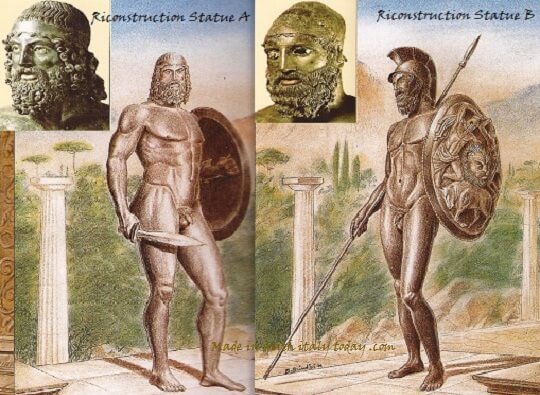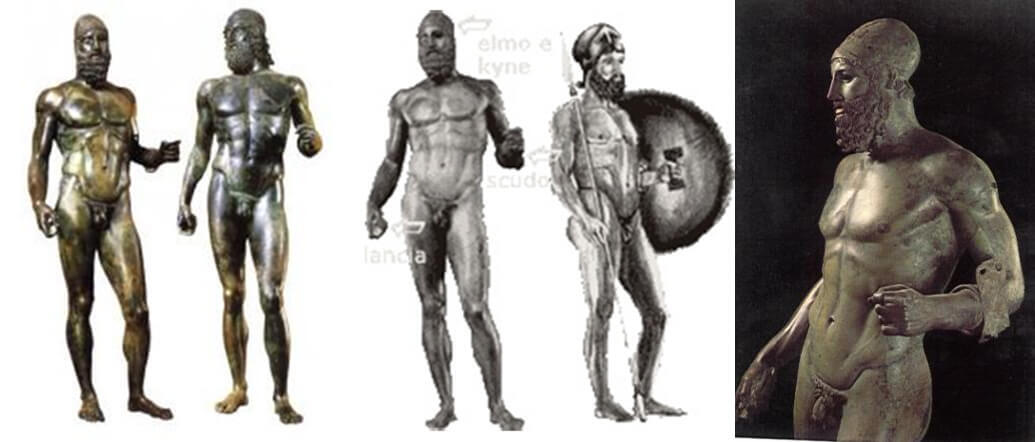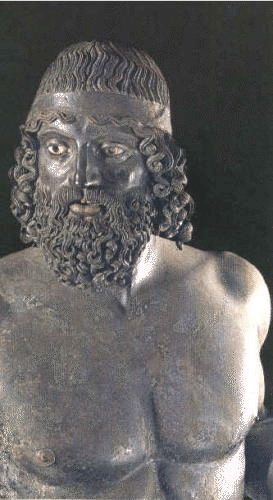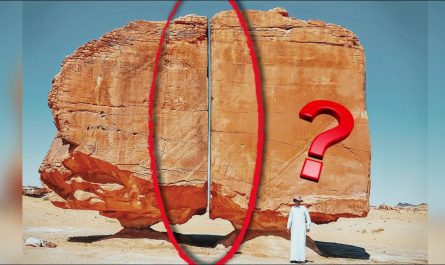Hidden beneath the waves off the coast of southern Italy for centuries, two ancient warriors were brought back to light in 1972. Known as the Riace Bronzes or Riace Warriors, these striking statues are not only breathtaking examples of ancient Greek artistry but also enduring mysteries of history.

A Chance Discovery Beneath the Sea
On August 16, 1972, a scuba diver named Stefano Mariottini was exploring the waters near Riace Marina, in southern Italy, when he stumbled upon what he thought were human remains. Instead, he had found two larger-than-life bronze statues—almost perfectly preserved, lying on the seabed about 300 meters offshore and 8 meters deep.

What he had discovered would soon become one of the most significant archaeological finds of the 20th century.
Masterpieces of Classical Greek Art
Experts believe the Riace Bronzes were crafted in Greece during the 5th century BCE. The statues, each standing about 2 meters tall, represent nude male warriors—muscular, poised, and lifelike. One appears older, possibly a seasoned warrior or god, while the other looks younger and more agile.

The level of detail is astonishing. Although made primarily of bronze, the statues also feature:
- Ivory and stone eyes
- Silver eyelashes and teeth
- Copper lips and nipples
These unique details give the statues a realism that stuns modern viewers to this day.
Who Were These Warriors?
Despite their fame, the true identities of the Riace Bronzes remain unknown. Some scholars believe they represent Greek heroes or gods, while others suggest they were victorious athletes, celebrated for their achievements.

The statues may have once held shields and spears and possibly wore helmets. Traces on the arms and heads support these theories. One figure (Statue A) may represent Tydeus, a fierce warrior of myth, and the other (Statue B) might be Amphiaraus, a seer who foresaw his own death.
Why Were They in the Sea?
There’s no shipwreck nearby, which adds to the mystery. Some historians theorize that the bronzes were part of a shipment of looted Greek art being transported to Rome. They may have been thrown overboard to lighten the load during a storm or to protect them from pirates.
Another theory suggests they were stolen from a nearby ancient Greek city like Locri and somehow lost at sea.
A Rare and Precious Find
Bronze statues from ancient Greece are incredibly rare. Most were melted down for their metal over the centuries. The Riace Bronzes survived only because they lay hidden underwater for so long.

After their recovery, the statues were carefully restored and are now housed in a climate-controlled room at the National Archaeological Museum of Reggio Calabria in southern Italy.
Art, Emotion, and Mystery
Since going on public display in 1981, the Riace Bronzes have captivated millions. They even inspired a special postage stamp and continue to draw over 130,000 visitors annually.
People often describe the statues with words like “magnetic,” “erotic,” and “mysterious.” Their physical perfection and silent strength tap into something deep in the human imagination—evoking a sense of timeless beauty, lost glory, and myth brought to life.
Conclusion
The Riace Bronzes are not just archaeological treasures—they are windows into a forgotten world, crafted with incredible skill and wrapped in mystery. Their discovery reminds us that history is still out there, waiting to be found beneath the surface of the everyday.
Whether you are an art lover, history buff, or simply curious, a visit to see these ancient warriors in Reggio Calabria is an unforgettable experience.
Have you seen the Riace Bronzes in person or learned about them before? Share your thoughts in the comments below!


